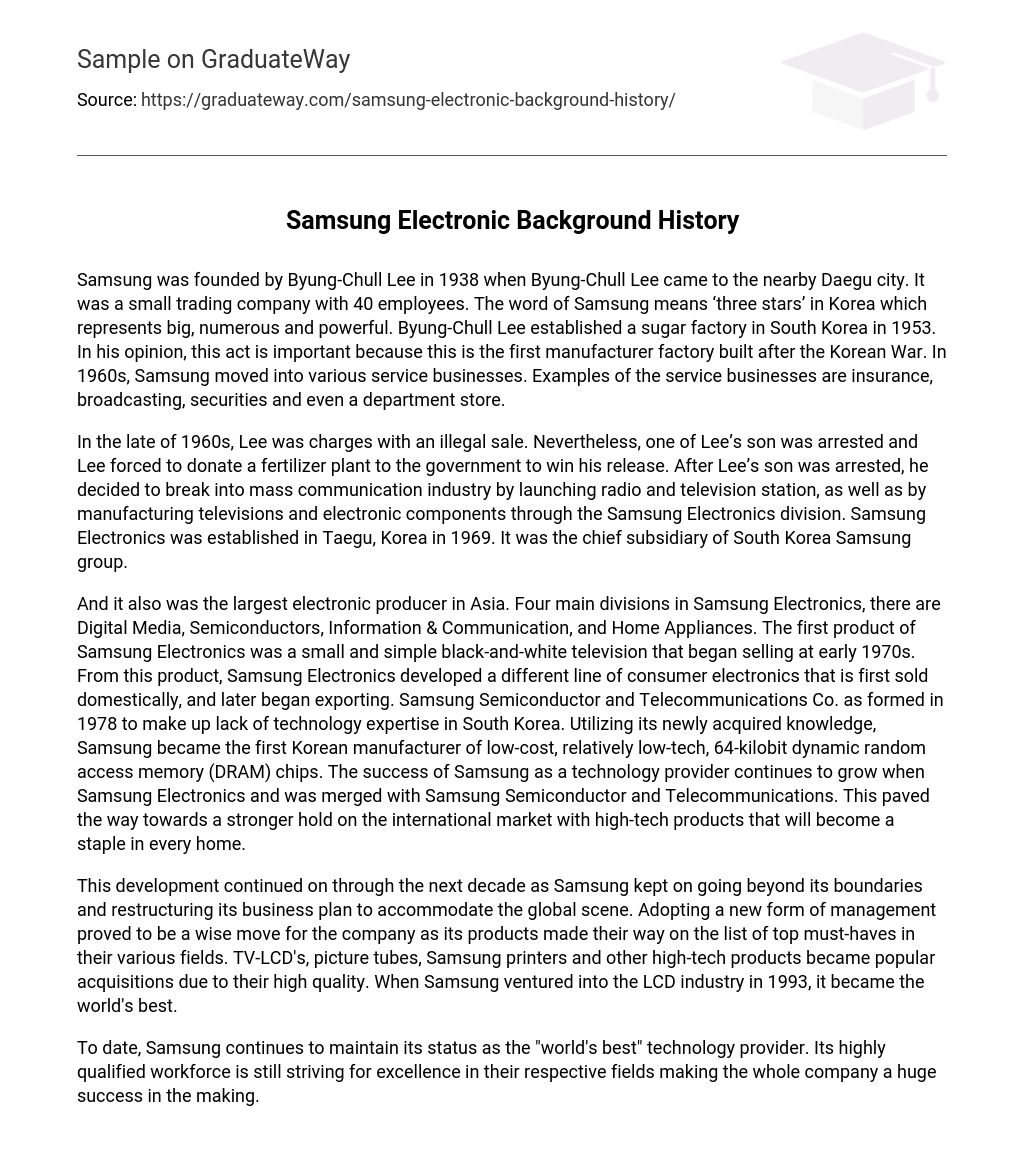Samsung, which means ‘three stars’ in Korea, was founded by Byung-Chull Lee in 1938 with only 40 employees. Byung-Chull Lee established the first manufacturer factory in South Korea after the Korean War, a sugar factory, in 1953. In the 1960s, Samsung expanded into different service businesses including insurance, broadcasting, securities, and even a department store.
During the late 1960s, Lee faced charges of illegal sale and saw his son being arrested. To secure his son’s release, Lee was compelled to donate a fertilizer plant to the government. Following his son’s arrest, Lee seized the opportunity to venture into the mass communication industry. He achieved this by founding a radio and television station and also establishing the Samsung Electronics division, which manufactured televisions and electronic components. Samsung Electronics, established in Taegu, Korea in 1969, became the main subsidiary of the South Korea Samsung group.
Samsung Electronics is the largest electronic producer in Asia, comprising of four main divisions: Digital Media, Semiconductors, Information & Communication, and Home Appliances. In the early 1970s, the company entered the market with a small black-and-white television and expanded its consumer electronics range. Initially targeting domestic markets, these products gradually gained popularity internationally. To address technological gaps within South Korea, Samsung Semiconductor and Telecommunications Co. was established in 1978. Leveraging their expertise, Samsung became the first Korean manufacturer to produce low-cost 64-kilobit dynamic random access memory (DRAM) chips. The merger between Samsung Electronics and Samsung Semiconductor and Telecommunications solidified their position as a technology provider, leading to the development of high-tech products that are now widely used worldwide.
In subsequent years, Samsung adapted its business strategy to suit the global market and achieved widespread popularity in diverse industries. Their exceptional quality high-tech products such as printers, TV-LCDs, and picture tubes were highly sought after. By 1993, Samsung had established itself as the leading global player in the LCD sector.
Despite the present time, Samsung remains the leading global technology provider. With a skilled and dedicated workforce, the company consistently excels in all areas, resulting in remarkable accomplishments. The key to its continuous success lies in constantly enhancing its management system and adhering to its fundamental beliefs. These principles encompass utilizing both human resources and technology to develop exceptional products and services that benefit society on a global scale.





